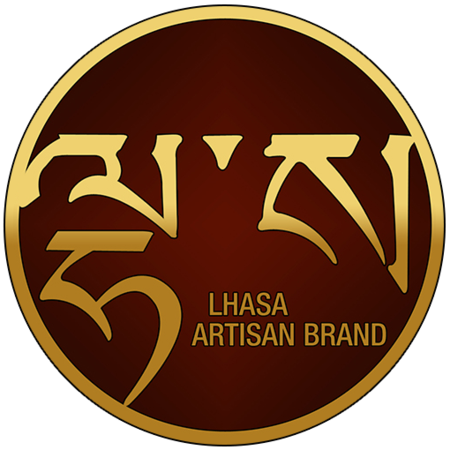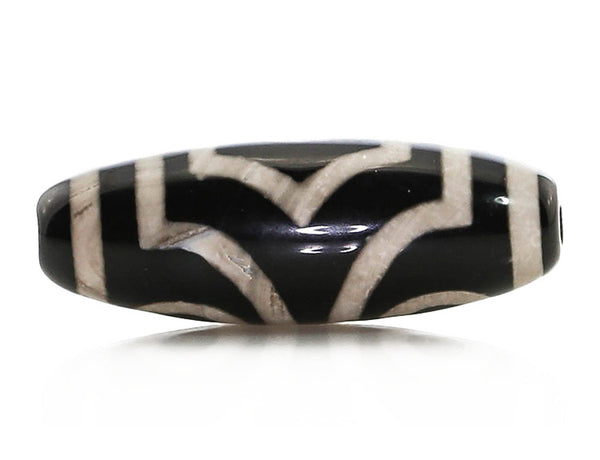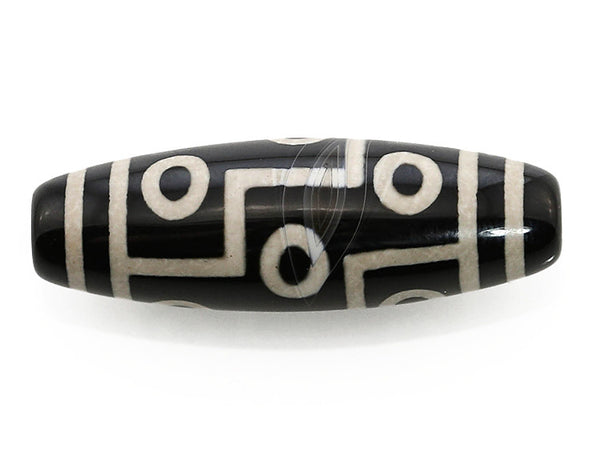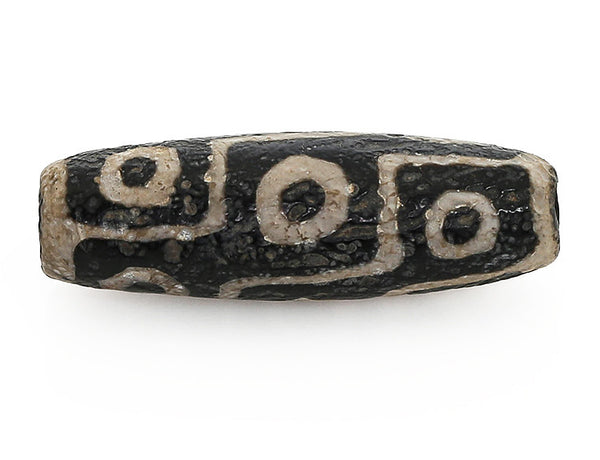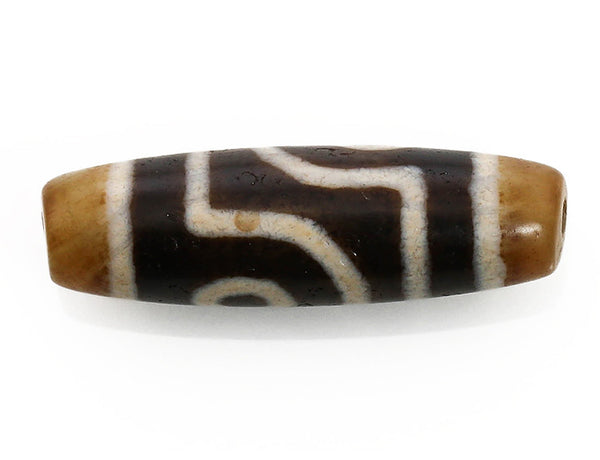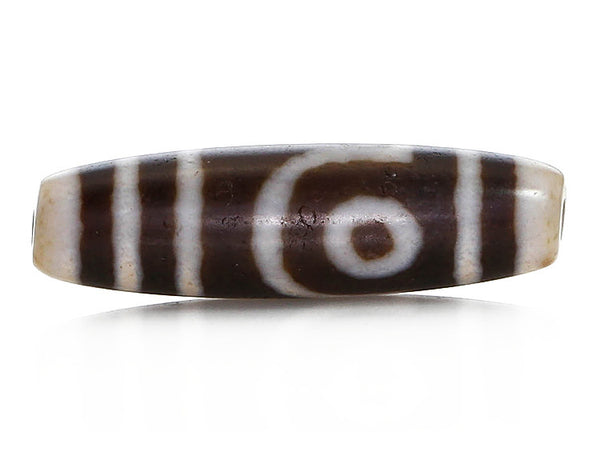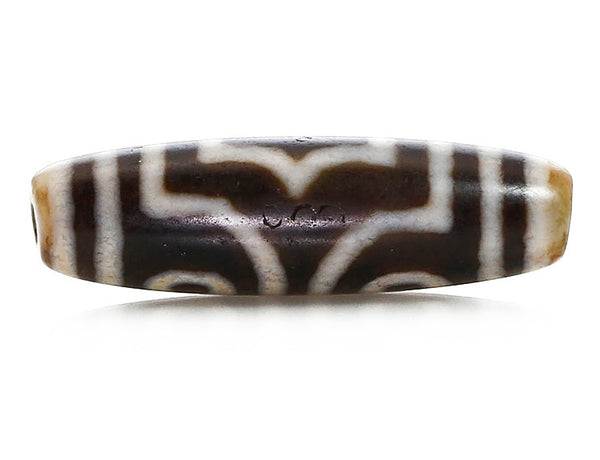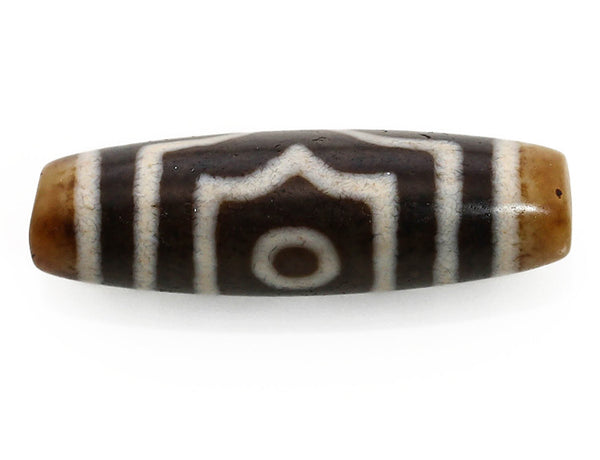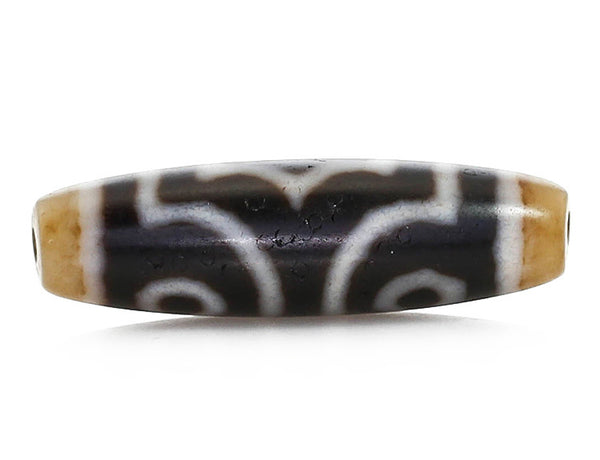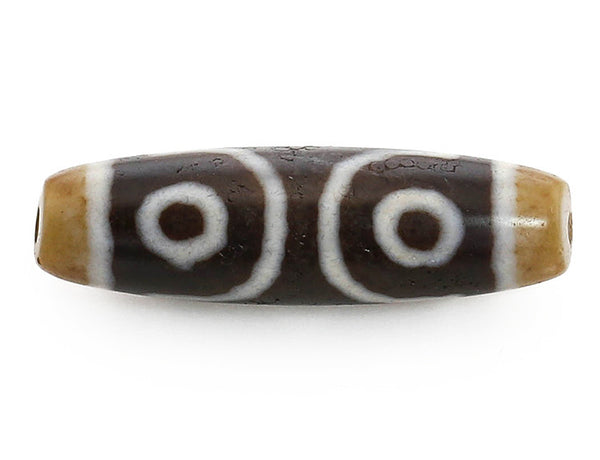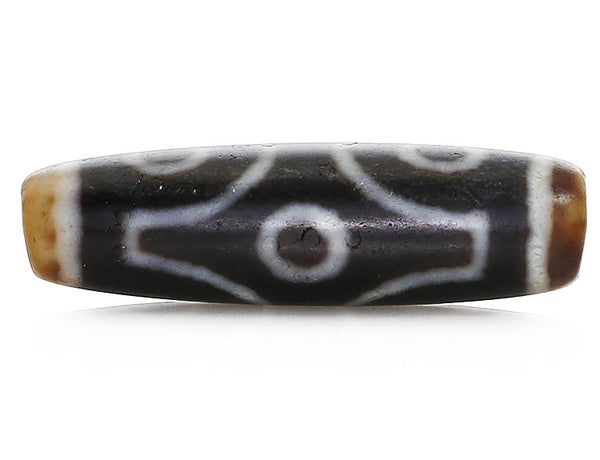The Origin of Dzi Beads
Banded or etched agate, known as Dzi or Gzi beads in Tibetan, are worn as protective amulets against bad luck, misfortune, disease and other negative astrological influences. They are usually found in a black or brown color with a cylindrical shape and are marked with white “eyes” or rings. The eyes can vary in number, up to twelve, but those with nine eyes are considered the most valuable as they serve as a protection from demonic possession. Authentic ancient dzi beads are quite rare and extremely expensive, and their cost can actually exceed that of a a brand new vehicle or even a modest home.
The origin of dzi beads are somewhat of a mystery. Tibetan legends describe several mythological sources for these stones. One belief is that they are living creatures that turn into stone once they are seen or touched. It is also believed that the gods drop them to the earth once they become worn or damaged, or that they are fruits that have fallen from the divine wish-fulfilling tree. Dzi beads are also rarely ever found to be in perfect condition and are often found in freshly plowed fields or near grave sites.
The techniques for etching these agates has been known across a broad geographical area of Asiatic countries since the third millennium b.c. This ancient technique usually involved applying the design to agate, chalcedony or carnelian, using a thin paste-like solution of sodium carbonate painted on with a reed brush. After the markings dried, the stone was buried in hot embers and baked for a short period. Once the stone was cooled and cleaned, it would leave behind the white design fused into the dark colored stone.
Replica dzi beads are highly sought after amongst collectors and Buddhists alike. Due to the original ancient stones being incredibly rare and expensive, the demand for high quality replica dzi beads has increased exponentially and they have a value of their own. Replica dzi beads should display characteristic circular aging marks, have a nice luster, be made from one of the traditional stone materials, and cinnabar (red or rust colored) dots are considered desirable. Dzi with naturally forming banding within the stone itself is also considered to be desirable. The white lined design of a dzi should be well-defined and well-etched.
Additionally, all of our beads are photographed with professional macro lenses, cameras and lighting in order to produce the most accurate closeup picture as possible.We also never represent a newly created bead as antique. Our dzi beads are obtained from fellow collectors and exotic bead specialists.
